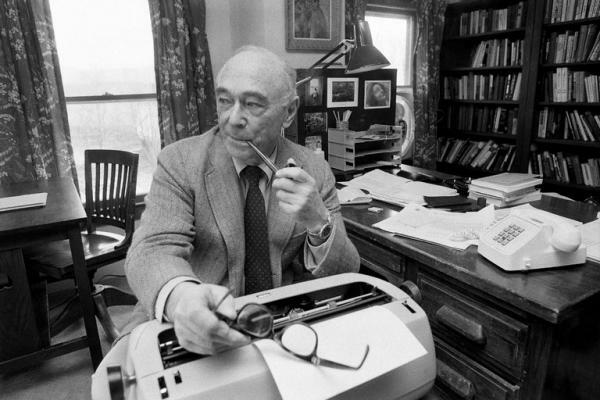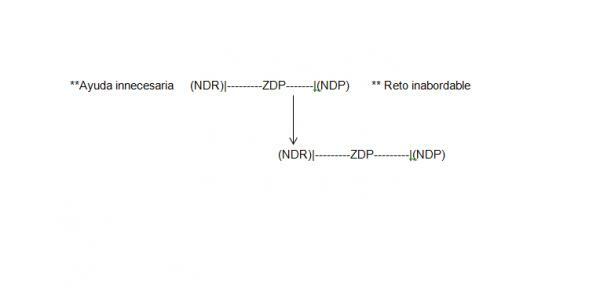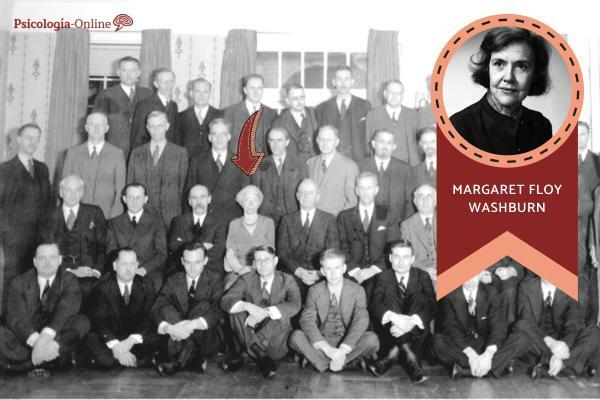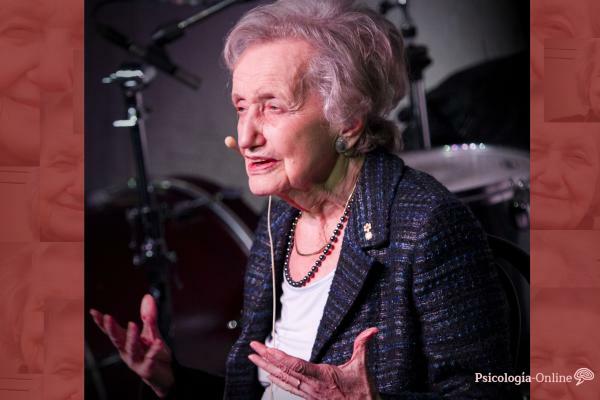
Image: Sue Klemens / Associated Press
According to Jerome Bruner's theory of learning by discovery, people learn by discovering themselves the content of what they must learn before they can assimilate it into its structure cognitive. That is, students do not learn the content in its final form, which is usually offered by the teacher in the traditional method, but they must learn by themselves in a fragmented and gradual. in this Psychology-Online article: Jerome Bruner: Biography and Theory of Discovery Learning, you will be able to delve into the most relevant aspects of Jerome Bruner's theory of learning.
Index
- Jerome Bruner: biography
- Jerome Bruner: theory
- Jerome Bruner and discovery learning
- Jerome Bruner and the scaffolding
Jerome Bruner: biography.
Jerome seymour bruner was born in 1915 and died in 2016. He was born visually impaired, that is, blind, but was able to regain a small percentage of his sight after undergoing several cataract operations. Even having recovered part of his vision, it was very limited and that is why he had to wear glasses with very thick lenses that allowed him to reinforce his vision throughout his life.
Jerome Bruner was recognized American psychologist who focused on studying education and made great contributions and contributions to cognitive psychology and Psychology of the education, as well as in cognitive learning theories. In addition, Bruner not only practiced as a psychologist, but also he was a writer and teacher, teaching classes in different universities.
The research is also relevant in Bruner's biography. He performed a series of research on perception and learning simultaneously with behaviorist theories, a fact that led him to confront behaviorist authors, such as Skinner. After working on perception, he entered the studies of cognition, stating that the mind is active and is full of motives, instincts and purposes that allow understand reality in a comprehensive way and, conversely, the mind cannot be considered either passive or a machine of conditioned responses to stimuli determined.
Another noteworthy aspect of Jerome Bruner's biography is that in World War II he enlisted in the us army, participating in the War Psychology Division of the European Allied Force Headquarters in France. During this stage of his life, his functions were directed to the military intelligence, for which thing, he investigated about psychosocial phenomena that occurred as a consequence of the war, in order to be able to examine popular attitudes. When the war ended, he returned to his previous life, where he worked as a professor and researcher at the university.
Jerome Bruner: theory.
In general, Bruner's theory of learning He understands that in order to achieve an adequate teaching-learning process, it is ideal to encourage the participation of learners and not focus solely on the figure of the teacher. In this sense, from Bruner's theory it is proposed that teachers promote the active participation of students in learning it, taking into account that it is a method of guided discovery, that is, interpreting the teacher as a guide who offers help to his students in their discovery, so that they build their own learning.
Thus, Jerome Bruner's most recognized contribution to psychology is the so-called Learning by discovery.
Jerome Bruner and discovery learning.
In learning by discovery of Bruner's theory, the role of active participation of students in the learning process, that is, that students have the opportunity to interact directly with reality and be the ones who learn what the teacher wants them to learn.
In order to achieve proper discovery learning, it is necessary for the teacher to take the role of mediator and guide of the students in their discovery. Therefore, the teacher does not provide the learning content in its final form to the students, but must make known a goal of learning and, in addition, directing and mediating the path to be followed by the apprentices until they, on their own feet, achieve said goal. In other words, the teacher must explain to his students what final learning they must achieve and give them a series of necessary tools and guidelines to accompany them on their way.
According to Bruner's theory, in order to learn any information meaningfully, one must have the personal experience of discovering it. Therefore, we understand that people's participation in discovery fosters meaningful learning, a fact that is closely related to Ausubel's meaningful learning theory. In addition, it not only encourages meaningful knowledge, it also promotes research habits in people.
Within the theory of learning by discovery of Jerome Bruner are distinguished three types of discovery:
- Inductive discovery: this type of discovery is characterized by the collection and rearrangement of data by the learner in order to arrive at a new category, concept or generalization.
- Deductive discovery: the discovery of deductive type implies the combination or the relationship between general ideas. Its purpose is to arrive at specific statements, as if it were the construction of a logical reasoning, in which we must start from the relationship or combination of different general ideas to reach a conclusion. For example, we start from the idea “all women are intelligent” and from the idea “all scientists are women”, a fact that leads us to deduce that “all scientists are intelligent”.
- Transductive discovery: in this type of discovery, the learner is able to relate and / or compare two particular elements and, furthermore, point out that they are similar in one or two aspects.
Finally, it should be noted that Bruner's theory states that teachers must adapt their methodological strategies to individual evolution and rhythm and to the development of each student. Fact that allows us to establish a relationship with the proposal, also by Jerome Bruner, of the scaffolding metaphor, which we will explain below.
Jerome Bruner and the scaffolding.
The scaffolding that Bruner speaks of refers to a metaphor. In order to delve into the meaning of this metaphor, we must first understand that the zone of proximal development (ZPD) of each apprentice is different and, that this area is the distance that is between the actual development level (NDR) and the potential development level (NDP). On the one hand, we understand the level of real development as everything that the learner is capable of perform on his own, which he knows how to do without the need for any help, that is, in a autonomous. On the other hand, we understand the level of potential development as everything that the apprentice can achieve and knows how to do but with the help offered by another more expert person.
Thus, in order to help an individual build knowledge and meaningful learning, we need to know her actual level of development. In this way, as the individual advances on his way to reach the final learning objective, they must be provided adjusted and contingent aid to said knowledge, until it is time to withdraw the aids and the student is able to use their knowledge autonomously, transforming them into their new level of real development. When the NDP becomes the student's NDR, the zone of proximal development is modified and, therefore, the scaffolding is started again but, this time, in relation to the new learning challenge to which it is proposed to arrive, and so on.
On the one hand, we understand as adjusted aid those that are located in the zone of proximal development (which is the distance between the level of real development and the level of potential development). On the other hand, when we talk about contingent aids, we refer to those aids that are offered and withdrawn in the right moment, in order not to cause the individual to develop a dependency on these aids.
Thus, the aid must be offered precisely in the zone of proximal development, since if it is provided at a lower level than of real development it would be unnecessary help because the individual already functions autonomously in relation to said help and, if such aids are provided at a level higher than potential development, it would be aids aimed at a challenge unapproachable.
In this sense, Bruner's scaffolding metaphor make reference to a building (knowledge to be learned) that must be constructed with the help of a scaffold (adjusted and contingent aids), until finally the time comes when the building is already built and, therefore, does not require any scaffolding and stands upright autonomous.

This article is merely informative, in Psychology-Online we do not have the power to make a diagnosis or recommend a treatment. We invite you to go to a psychologist to treat your particular case.
If you want to read more articles similar to Jerome Bruner: Biography and Theory of Discovery Learning, we recommend that you enter our category of Biographies.
Bibliography
- Abarca, J.C. (2017). Jerome Seymour Bruner (1915-2016). Journal of Psychology, 35 (2).
- Baro, A. (2011). Active methodologies and discovery learning. Innovation and Educational Experiences Magazine, (40), 1-11.


